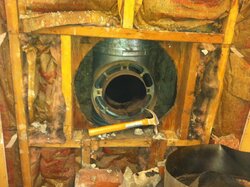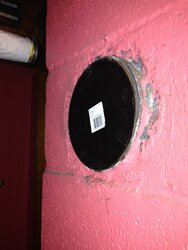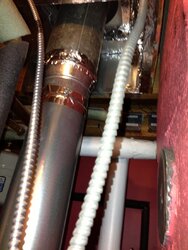Hey guys! I bought a house recently and there were two wood stoves hooked up to one flue, one in the basement and there other right above it on the main floor. I have removed the stove on the main floor and found that it was connected to the flue at a t inside of the wall. I was hoping to keep the stove in the basement, but I am not sure what to do about the hole in the tee-section. I found a cap at lowes, but it isn't insulated and I am concerned that if I drywall over the hole in my main floor wall it could pose a fire danger. I have included a picture of the Tee-section. The inner hole is 8 inches the outer side is 12. Thank you for giving your time to help me!
Capping off a Flue pipe Tee?
- Thread starter The Fish
- Start date
-
Active since 1995, Hearth.com is THE place on the internet for free information and advice about wood stoves, pellet stoves and other energy saving equipment.
We strive to provide opinions, articles, discussions and history related to Hearth Products and in a more general sense, energy issues.
We promote the EFFICIENT, RESPONSIBLE, CLEAN and SAFE use of all fuels, whether renewable or fossil.




